I first heard the word "Ragnarok" in a video game. It was presented as a spectacular, fiery Armageddon—the ultimate boss battle for the Norse gods. It was epic, but it also felt... final. It wasn't until I dove into the original sagas, like the Poetic Edda, that I discovered the true, profound story. My journey to understand what is Ragnarok in Norse mythology revealed that it’s so much more than a simple doomsday. It’s a complex, cyclical prophecy of fate, destruction, and surprisingly, rebirth. This isn't just the end of the world; it’s the violent, necessary turning of a cosmic wheel, a story that holds deep insights into the Viking worldview on destiny, courage, and the nature of existence itself.
Contents
- 1 The Premise of Fate: Understanding the Prophecy of Ragnarok in Norse Mythology
- 2 The Harbingers of Doom: What Triggers Ragnarok in Norse Mythology?
- 3 The Final Battle: A Detailed Look at What Happens During Ragnarok in Norse Mythology
- 4 The Aftermath and Rebirth: Is Ragnarok Truly the End in Norse Mythology?
- 5 Interpreting the Myth: What is the Deeper Meaning of Ragnarok in Norse Mythology?
- 6 FAQ: Common Questions About Ragnarok
- 7 References
The Premise of Fate: Understanding the Prophecy of Ragnarok in Norse Mythology
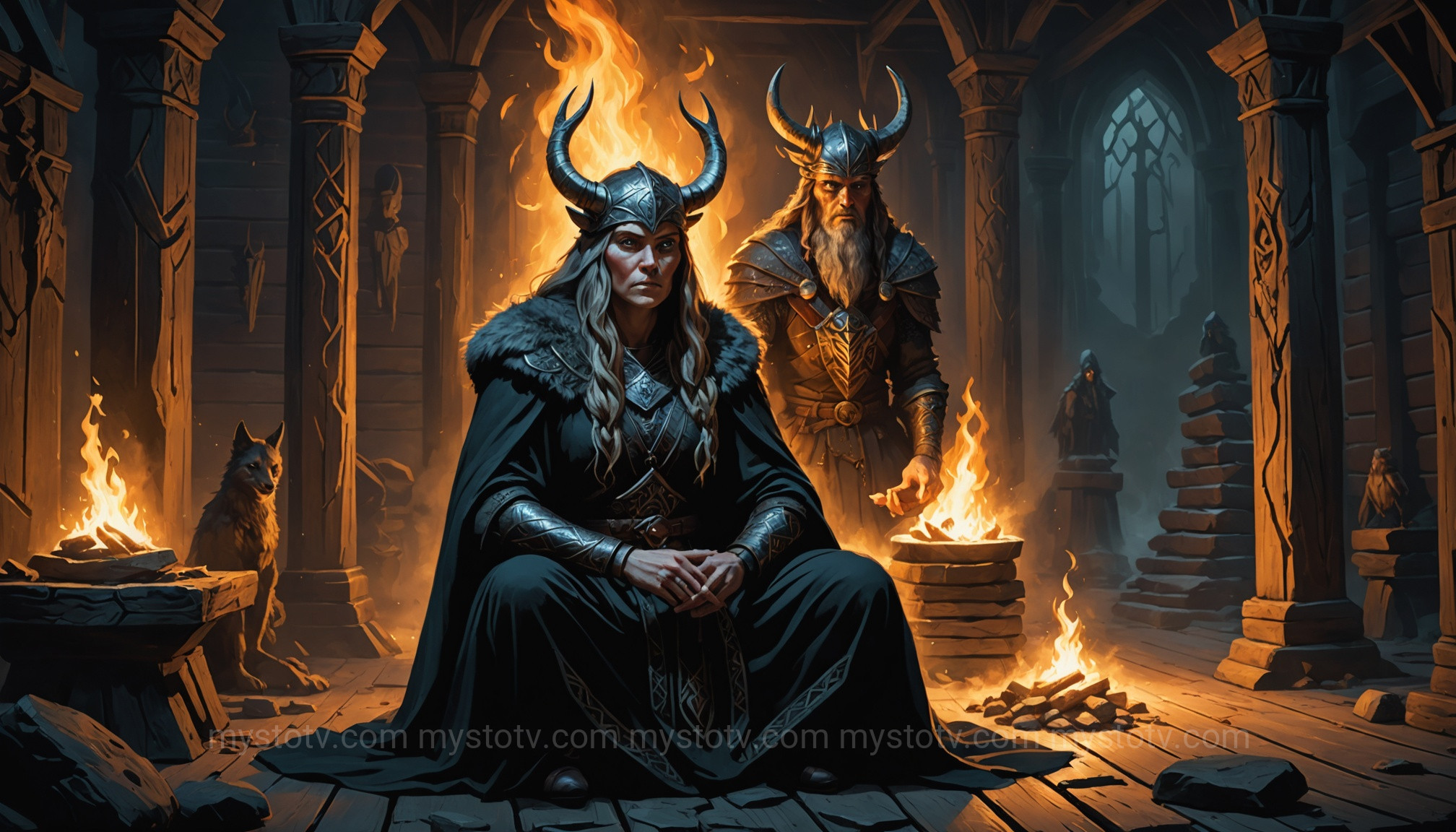
Unlike the apocalyptic events in many other belief systems, Ragnarok is not a potential punishment or a random cataclysm. It is an inevitability, a pre-ordained destiny woven into the very fabric of the cosmos by the Norns—the Fates of Norse myth. The gods, including the all-knowing Odin, are fully aware of their impending doom. They know how they will die, who will kill them, and that their world, Asgard, will fall. This central concept of inescapable fate, or Wyrd, is fundamental to understanding what is Ragnarok in Norse mythology. It’s not a question of if it will happen, but when.
The most detailed account of this prophecy comes from the Völuspá ("The Prophecy of the Seeress"), a poem within the Poetic Edda. In it, the god Odin summons the spirit of a Völva, a seeress, who recounts the entire history of the world from creation to its violent end and subsequent rebirth. She details the signs that will precede the final battle and the specific fates of the major gods. The gods' struggle, therefore, is not to avert Ragnarok but to face it with courage and honor, to meet their destiny head-on, fighting for the world and its order even when they know the cause is ultimately lost. This acceptance of doom shapes their character and defines Norse heroism.
This foreknowledge creates a palpable tension throughout Norse mythology. The gods actively try to delay the inevitable. They bind the monstrous wolf Fenrir, cast the world serpent Jörmungandr into the sea, and imprison the half-dead Hel in the underworld. Yet, each of these actions only serves to ensure the prophecy will be fulfilled. Fenrir’s binding angers him, Jörmungandr grows large enough to encircle the world, and Loki, the father of these beings, harbors a deep-seated grudge that will eventually unleash chaos. The prophecy is a self-fulfilling one, where the attempts to prevent it are the very mechanisms that bring it about.
The Harbingers of Doom: What Triggers Ragnarok in Norse Mythology?
The prophecy of Ragnarok is not set into motion by a single event but by a cascade of omens and disasters that signal the breakdown of order in the cosmos. These harbingers are clear signs that the end is near. Understanding these triggers is essential to grasping the full narrative of what is Ragnarok in Norse mythology.
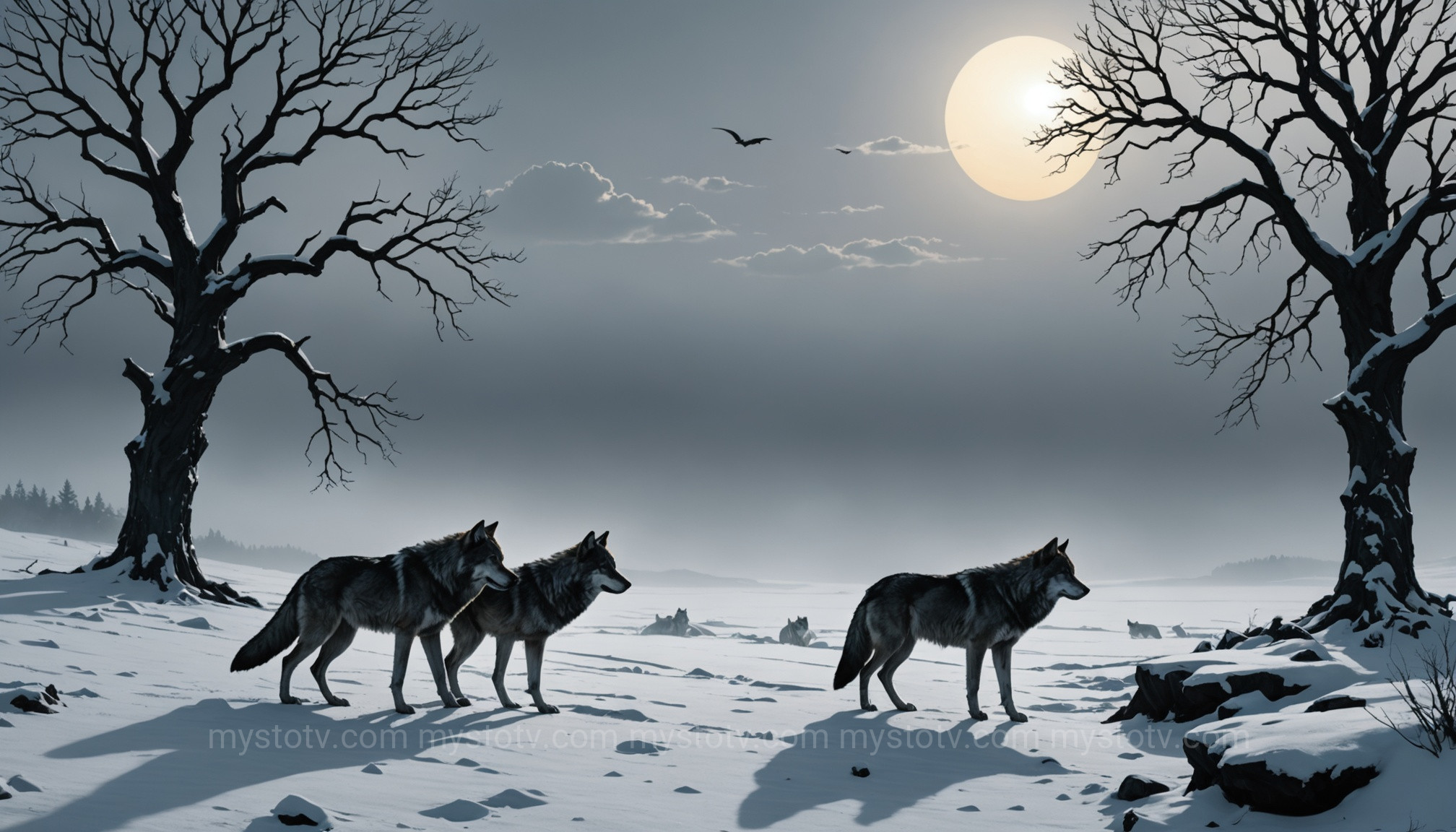
The Death of Baldr
The first and most significant omen is the death of Baldr the Beautiful, the god of light and purity. Loved by all, Baldr dreams of his own death, prompting his mother, Frigg, to extract an oath from everything in creation not to harm him. Everything, that is, except the seemingly harmless mistletoe. The trickster god Loki exploits this oversight. He fashions a spear from mistletoe and tricks the blind god Höðr into throwing it at Baldr, killing him instantly. This act represents the first true tragedy among the Æsir, a loss of innocence and the introduction of mortality and betrayal into their divine realm. Baldr's descent into the realm of Hel is a point of no return, signaling that the bonds of kinship and order are beginning to fray.
Fimbulwinter: The Great Winter
Following Baldr's death, the world of mortals, Midgard, plunges into chaos. The Völuspá describes an "axe-age, a sword-age" where bonds of family are broken and society collapses into greed and violence. This moral decay is followed by a cataclysmic climate event known as Fimbulwinter, or "The Great Winter." Three relentless winters follow one another with no summer in between. The world is blanketed in snow and ice, crops fail, and humanity is nearly wiped out by starvation and strife. This long, dark period serves as a prelude to the final conflict, a physical manifestation of the cosmic order breaking down before the final answer to what is Ragnarok in norse mythology is revealed.
The Bonds are Broken
The final triggers are the literal breaking of chains. The monstrous wolf Fenrir, who has grown immensely powerful, will finally shatter the magical fetters, Gleipnir, that have held him. Simultaneously, his father Loki, who was bound to a rock with the entrails of his own son as punishment for his role in Baldr's death, will break free from his prison. From the sea, the great world serpent Jörmungandr will writhe in fury, causing massive tidal waves to flood the earth as he makes his way to the battlefield. The sky itself will crack open as the fire giant Surtr and his armies march from Muspelheim. The clarion call is sounded by the god Heimdall, who blows the Gjallarhorn to awaken the gods and rally them for the final, doomed battle.
The Final Battle: A Detailed Look at What Happens During Ragnarok in Norse Mythology
When Heimdall sounds the Gjallarhorn, the final war begins. This is the cataclysmic confrontation that defines the popular understanding of what is Ragnarok in Norse mythology. The armies of chaos and order converge on the plain of Vígríðr for a battle that will consume the gods and the world they protect. It is a series of fated, one-on-one duels where heroism is measured not by survival, but by facing certain death with unwavering courage.
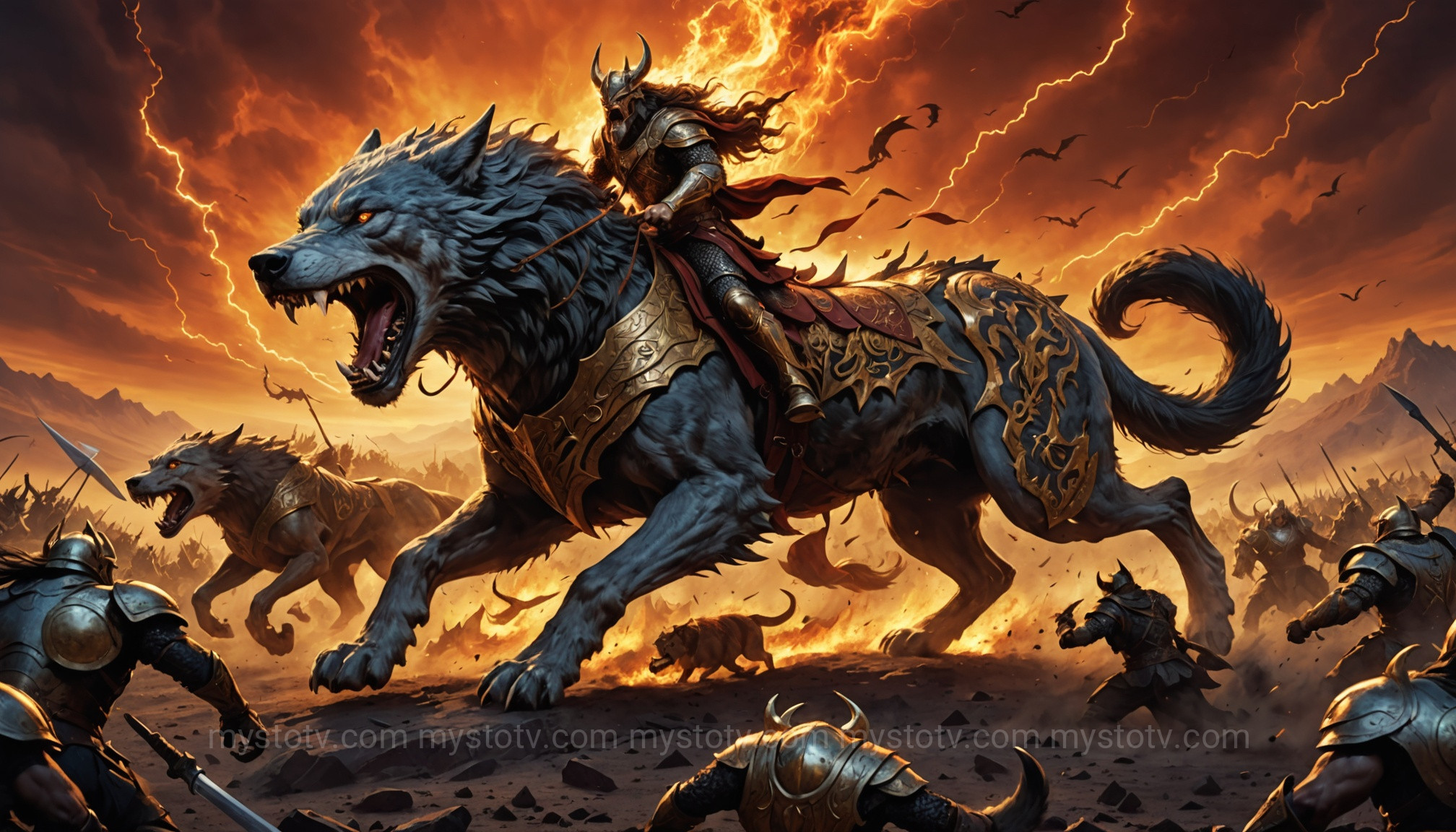
Odin vs. Fenrir: The Allfather's End
Odin, the Allfather, leader of the Æsir, rides to battle on his eight-legged steed, Sleipnir. He knows his destiny and rides straight towards his prophesied killer: the monstrous wolf Fenrir. Despite his wisdom and power, Odin is no match for the beast's raw, chaotic force. The Völuspá describes Fenrir with his jaws agape, one touching the earth and the other the sky, devouring everything in his path. In a swift, brutal moment, the king of the gods is swallowed whole. This is perhaps the most shocking event of Ragnarok—the death of the chief deity, underscoring the theme that no one, not even the most powerful, can escape their fate.
Thor vs. Jörmungandr: The Thunder God's Final Victory
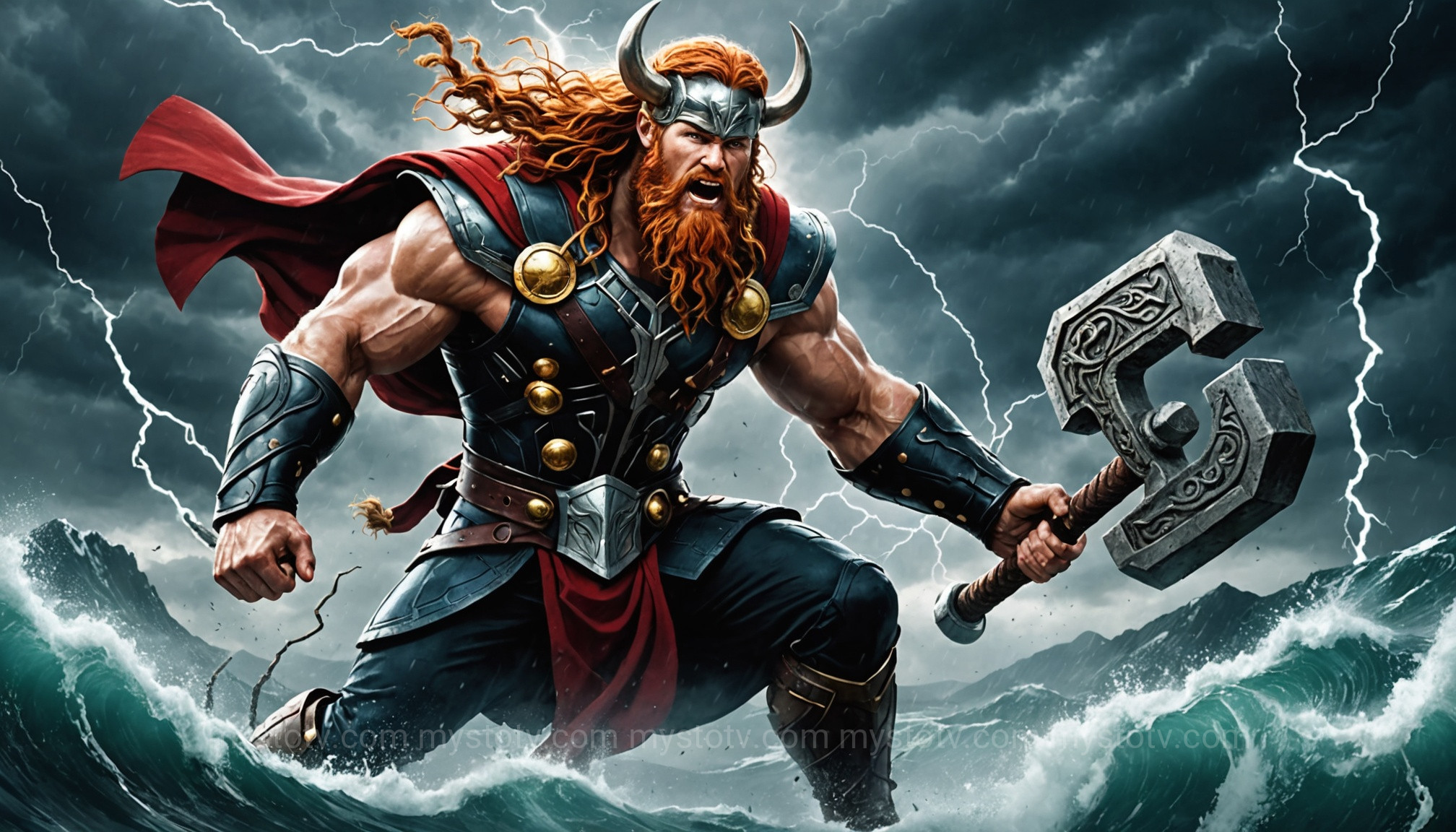
Thor, the champion of Asgard and humanity, confronts his own ancient nemesis, the Midgard Serpent Jörmungandr. Theirs is a rivalry that spans countless myths. During Ragnarok, their final battle is spectacular. Thor, filled with divine rage, succeeds in killing the colossal serpent, smashing its head with his mighty hammer, Mjölnir. It is a moment of victory, but a fleeting one. As the serpent dies, it spews its venom all over the god of thunder. Thor stumbles back nine paces before succumbing to the poison and falling dead. He wins his battle but loses his life, a perfect example of the pyrrhic victories that characterize the Norse apocalypse.
Other Key Confrontations and the World's Destruction
Across the battlefield, other fated duels play out. The god Freyr, having given away his magic sword for love, fights the fire giant Surtr armed only with an antler. He is quickly killed. The trickster Loki and the ever-vigilant Heimdall, two long-standing enemies, face each other and manage to kill one another in a final, mutual demise. After most of the gods and their foes have fallen, Surtr unleashes his flaming sword, engulfing the entire world in fire. The sun turns black, the stars vanish, and the earth sinks into the boiling sea. This fiery cleansing marks the ultimate destruction of the old world, the final, terrifying answer to what is Ragnarok in Norse mythology.
The Aftermath and Rebirth: Is Ragnarok Truly the End in Norse Mythology?
For many, the story ends with Surtr's fire and the world sinking into the sea. However, this is only half the tale. The most profound part of the myth is not the destruction but what comes after. Answering the question of what is Ragnarok in Norse mythology is incomplete without understanding its cyclical nature. It is not just an end; it is a violent, cosmic reset button.
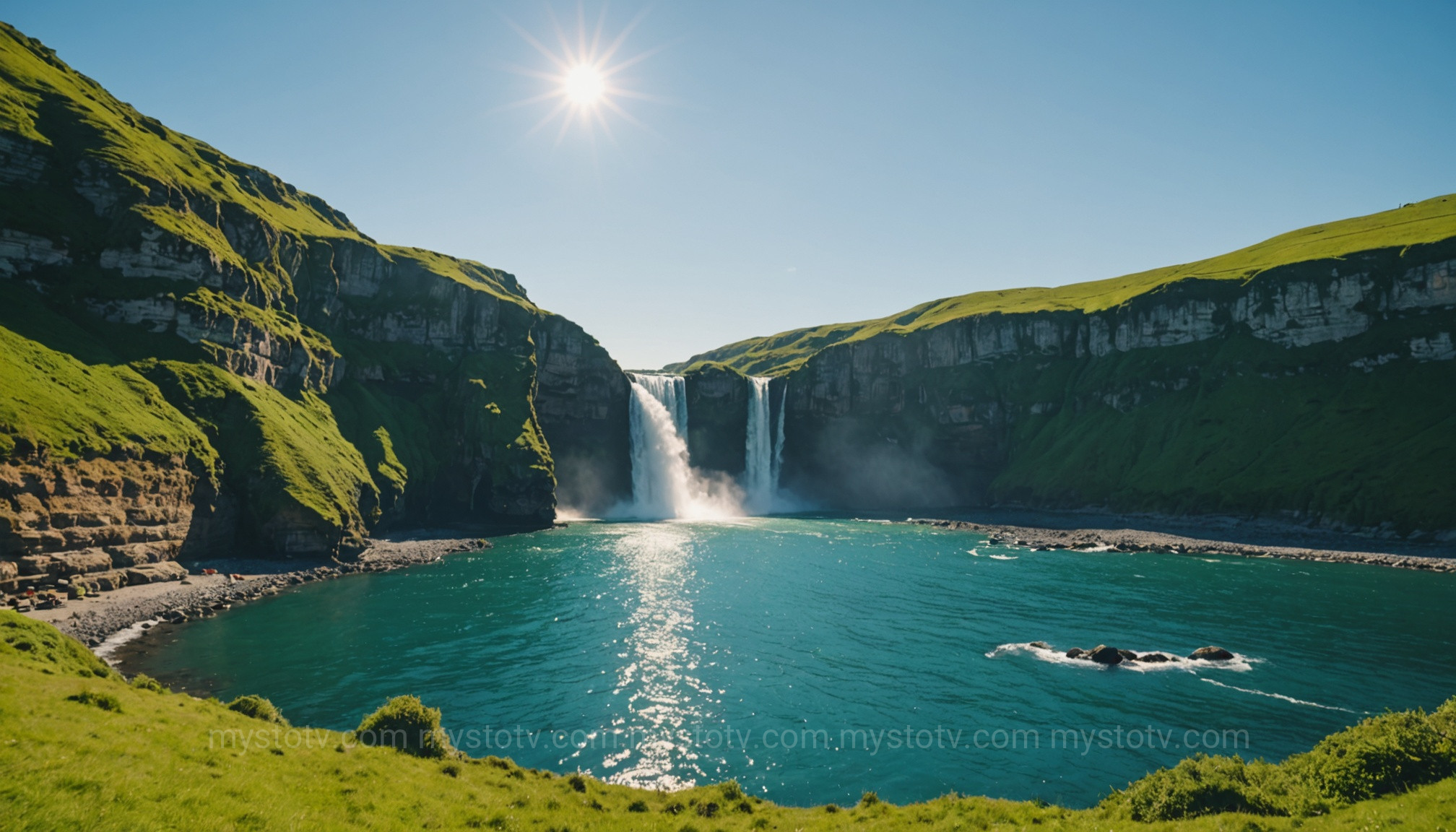
A New World Rises
From the waters, a new earth emerges, green, beautiful, and fertile. The Völuspá poetically describes it as a world where "unsown fields will bear wheat." The destruction has cleansed the world of its old evils, strife, and decay. A new, brighter sun, the daughter of the one swallowed by the wolf Sköll, will light the sky. This rebirth is not a return to the old world but the creation of a better, more idyllic one. It's a world free from the old grievances and predetermined conflicts that doomed the gods.
The Survivors: Gods and Humans
While most of the gods perish, a handful survive to inhabit this new world. Odin’s sons, Víðarr and Váli, survive the conflict. Víðarr's survival is particularly significant, as he avenges his father by killing the wolf Fenrir, tearing its jaw apart. Thor’s sons, Móði and Magni, also survive and inherit their father’s powerful hammer, Mjölnir. Most surprisingly, the gentle Baldr and his unwitting killer, Höðr, return from the land of the dead, reconciled and ready to lead a new generation of gods in this peaceful era. Their survival signals a break from the inescapable fates of the past.
Humanity is not entirely wiped out either. Two humans, Líf ("Life") and Lífþrasir ("Striver after Life"), survive by hiding in the Wood of Hoddmímis holt, which was untouched by Surtr's flames. They emerge from their hiding place and repopulate the new earth, becoming the progenitors of a new human race. Their survival ensures that the cycle of life continues, moving from a world governed by gods and giants to one that will be inherited by humankind.
Interpreting the Myth: What is the Deeper Meaning of Ragnarok in Norse Mythology?
To truly understand what is Ragnarok in Norse mythology, we must look beyond the epic battles and see the philosophical and cultural ideas it represents. Ragnarok is a mirror reflecting the core values of the Viking Age society that created it.
One of the most potent themes is heroism in the face of certain doom. The gods know they will lose. Odin knows Fenrir will devour him. Thor knows Jörmungandr's venom will be his end. Yet, they do not flee or despair. They arm themselves and fight with all their might. This defines the Norse ideal of a hero: courage is not the absence of fear or the hope of victory, but the will to act honorably and fight for what is right, even when defeat is certain. It’s a philosophy of defiant struggle against a fatalistic cosmos.
The theme of a cyclical universe is also central. Unlike the linear, one-time apocalypse of some other faiths, Ragnarok is part of a cycle of creation, destruction, and renewal. This may reflect an agricultural society's understanding of the seasons—the death of winter (Fimbulwinter) leading to the rebirth of spring (the new world). This cyclical view suggests that endings are not final but are necessary precursors to new beginnings. Some scholars also suggest that the optimistic rebirth element, particularly the return of the peaceful Baldr, may show the influence of Christian beliefs about resurrection seeping into the Norse oral traditions as they were being written down during the Christianization of Scandinavia.
FAQ: Common Questions About Ragnarok
Is the Marvel Cinematic Universe version of Ragnarok accurate?
No, the Marvel version (specifically in Thor: Ragnarok) is a creative adaptation, not a faithful retelling. In the film, "Ragnarok" is conflated with the destruction of Asgard by the fire demon Surtur, triggered by Thor's sister Hela (a character who doesn't exist in that form in the myths). The film borrows elements like Fenris Wolf and Surtur but changes the entire context, character fates, and philosophical meaning. The mythological Ragnarok is a prophecy about the end of the entire cosmos and the death of most major gods, not just the destruction of their home planet.
Did the Vikings believe Ragnarok was a real, future event?
It's difficult to know for certain how literally the average Viking interpreted their myths. For many, these stories were likely a blend of religious belief, cultural identity, and a framework for understanding the world. Ragnarok served as a powerful metaphor for the inescapable realities of life: that all things, even the gods and the world itself, have an end. It reinforced the cultural importance of facing hardship and death with bravery. It was less a literal doomsday clock and more a philosophical foundation for how one should live their life.
Who "wins" Ragnarok?
In the traditional sense of a battle, no one "wins." The forces of chaos (Loki, Fenrir, giants) succeed in killing the gods and destroying the world, so they achieve their goals. However, the forces of order (the Æsir) succeed in fighting honorably and taking down their fated enemies with them. The ultimate victor, in a way, is the cycle itself. The conflict wipes the slate clean, allowing a new, better world to emerge from the ashes, free from the old conflicts. The true "win" is the rebirth and the continuation of life through the surviving gods and humans.
In conclusion, the quest to understand what is Ragnarok in Norse mythology takes us far beyond a simple story of a world-ending battle. It is a profound and complex prophecy about the cyclical nature of existence. It teaches that even in the face of certain, unavoidable doom, there is profound meaning in courage, honor, and duty. Ragnarok is not merely an ending but a brutal, fiery transformation that paves the way for renewal and hope. It is the twilight of the gods, but it is also the dawn of a new world, a timeless narrative of destruction giving way to rebirth.
References
- Lindow, John. Norse Mythology: A Guide to the Gods, Heroes, Rituals, and Beliefs. Oxford University Press, 2002.
- Sturluson, Snorri. The Prose Edda. Translated by Jesse L. Byock, Penguin Classics, 2005.
- Larrington, Carolyne (trans.). The Poetic Edda. Oxford World's Classics, 2nd Edition, 2014. (Specifically the poems Völuspá and Vafþrúðnismál).